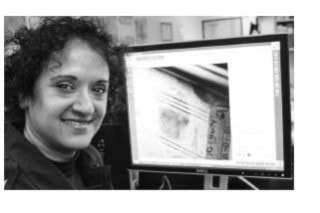Sgt. Nav Hothi
Born: Dartford, England
Years of service: 14,
10 with RCMP foren-
sic identification
One of the challenges facing RCMP forensic identification supervisor Sgt. Nav Hothi is how popular television shows shape the public’s perception of work the unit does.
“One of the effects of TV is what victims of crime expect from watching these shows,” Hothi said. “You feel disheartened because they feel like I’m letting them down based on unrealistic expectations from TV. It’s definitely affected our job.
“When we get to court, for example, juries are under the impression that all of the evidence presented is just like they watched the night before on CSI. They think it’s going to be conclusive, and the case will be a slam dunk.”
Although that does happen occasionally, that’s the exception, not the rule, Hothi said, pointing out that the Robert Pickton murder trial is probably the best-known example of a case solved significantly by science.
“Most cases are solved through good old-fashioned police work, not science,” she said. “We’re only one facet.”
The RCMP forensic identification unit’s work primarily involves working at crime scenes to search for and recover physical evidence.
“In most cases, the officer at the scene decides whether we’re called in, based on training they receive at Depot, and training they’ve received from us,” Hothi explained.
Because it’s so easy to unintentionally remove, obliterate or contaminate evidence, Hothi has a few pointers to pass along.
“If your vehicle has been broken into, try not to drive it or search through it,” she said. “Rain and environmental conditions can come into play. How new is the vehicle how clean is it? ”
If your home has been broken into, Hothi’s best advice is don’t enter.
“That’s as much for safety as preserving evidence,” Hothi noted. “It’s a challenge because your initial response is to make sure everything is okay. Are my kids home, is my pet safe, is my passport still there?
“Not going where the intruder has been until the police arrive makes our job much easier, and greatly increases your chance of recovery. Once someone sits in a chair, they leave evidence and DNA behind. Once someone else sits in that chair, it makes it much harder to find that evidence.”
Unlike the U.S., where there are more civilians than police working in forensics, in Canada there are very few civilians involved in this type of work.
The RCMP typically looks for interested members with a minimum of 3.5 years service. Following an exam, they are invited to do a three-week assessment, based on their score.
“It gives us a chance to see what they can do, and gives them an opportunity to see what the work is like,” Hothi explained. “The three-year apprenticeship is tough, with lots of courses and exams. When you work that hard for it, generally you stay with it for the duration of your career.
“The tough part is that we don’t have the positive interaction with people that is part of a lot of other police work. We only come into people’s lives when something bad has happened.”
For Hothi, however, the rewards far outweigh the challenges.
“We get our job satisfaction from assisting investigators in moving investigations forward. When we hear that a crime has been solved and a culprit has been charged, we’re just as pleased as the victims are. I’m proud to supervise this dedicated, hardworking group of specialists”
rick.stiebel@rcmp-grc.gc.ca
—Rick Stiebel is the Langford-RCMP community liaison.
